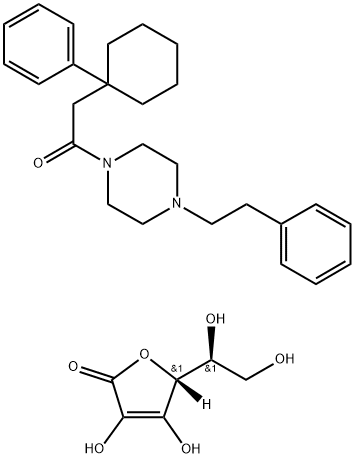Rhein
Synonym(s):Rheic acid;Rhubarb yellow;4,5-Dihydroxyanthraquinone-2-carboxylic acid;9,10-Dihydro-4,5-dihydroxy-9,10-dioxo-2-anthracenecarboxylic acid;Cassic acid
- CAS NO.:478-43-3
- Empirical Formula: C15H8O6
- Molecular Weight: 284.22
- MDL number: MFCD00009618
- EINECS: 207-521-4
- SAFETY DATA SHEET (SDS)
- Update Date: 2024-12-18 14:08:52

What is Rhein?
The Uses of Rhein
Rhein is used to inhibit growth factor beta-1 induced plasminogen activator inhibitor-1 in endothelial cells. It acts as an antibacterial agent against Staphylococcus aureus. It is also used as a laxative. Further, it is employed as a pharmaceutical intermediate.
The Uses of Rhein
Found in the free state and as glucoside in Rheum spp, Polygonaceae (rhubarb) and in Senna leaves. A potential antioxidant resource: endophytic fungi from medicinal plants.
The Uses of Rhein
Rhein was used to induce necrosis-apoptosis switch in injured pancreatic acinar cells.
Definition
ChEBI: Rhein is a dihydroxyanthraquinone.
General Description
Yellow needles (from methanol) or yellow-brown powder.
Air & Water Reactions
Insoluble in water.
Reactivity Profile
Rhein forms a red potassium salt and a pink sodium salt.
Hazard
Low toxicity by ingestion.
Fire Hazard
Flash point data for Rhein are not available; however, Rhein is probably combustible.
Biochem/physiol Actions
Constituent that is enriched in rhubarb with anti-inflammatory, anti-osteoarthritic, and anti-cancer activity. It reduces IL-1β production and secretion, caspase-3 activity, inducible nitric oxide synthase activity, and phosphorylation of c-Jun and c-Jun NH2-terminal kinase (JNK).
Safety Profile
A poison by intravenous route. Low toxicity by ingestion. When heated to decomposition it emits acrid smoke and irritating vapors.
storage
Store at -20°C
Properties of Rhein
| Melting point: | ≥300 °C (lit.) |
| Boiling point: | 346.72°C (rough estimate) |
| Density | 1.3269 (rough estimate) |
| refractive index | 1.4413 (estimate) |
| storage temp. | 2-8°C |
| solubility | DMSO (Slightly), Methanol (Slightly) |
| form | neat |
| pka | 3.17±0.20(Predicted) |
| form | Solid |
| color | Yellow to Dark Orange |
| Water Solubility | <0.1 g/100 mL at 17 ºC |
| λmax | 432nm(MeOH)(lit.) |
| Merck | 14,8176 |
| BRN | 2222155 |
| Stability: | Hygroscopic |
| CAS DataBase Reference | 478-43-3(CAS DataBase Reference) |
| EPA Substance Registry System | 2-Anthracenecarboxylic acid, 9,10-dihydro-4,5-dihydroxy-9,10-dioxo- (478-43-3) |
Safety information for Rhein
| Signal word | Warning |
| Pictogram(s) |
 Exclamation Mark Irritant GHS07 |
| GHS Hazard Statements |
H315:Skin corrosion/irritation H319:Serious eye damage/eye irritation H335:Specific target organ toxicity, single exposure;Respiratory tract irritation |
| Precautionary Statement Codes |
P261:Avoid breathing dust/fume/gas/mist/vapours/spray. P264:Wash hands thoroughly after handling. P264:Wash skin thouroughly after handling. P271:Use only outdoors or in a well-ventilated area. P280:Wear protective gloves/protective clothing/eye protection/face protection. P302+P352:IF ON SKIN: wash with plenty of soap and water. P305+P351+P338:IF IN EYES: Rinse cautiously with water for several minutes. Remove contact lenses, if present and easy to do. Continuerinsing. |
Computed Descriptors for Rhein
| InChIKey | FCDLCPWAQCPTKC-UHFFFAOYSA-N |
New Products
(S)-3-Aminobutanenitrile hydrochloride 4-Methylphenylacetic acid N-Boc-D-alaninol N-BOC-D/L-ALANINOL Tert-butyl bis(2-chloroethyl)carbamate 3-Morpholino-1-(4-nitrophenyl)-5,6-dihydropyridin- 2(1H)-one Furan-2,5-Dicarboxylic Acid Tropic acid 1-Bromo-3,5-Di-Tert-Butylbenzene S-2-CHLORO PROPIONIC ACID ETHYL ISOCYANOACETATE 2-Bromo-1,3-Bis(Dimethylamino)Trimethinium Hexafluorophosphate 4-IODO BENZOIC ACID 3-NITRO-2-METHYL ANILINE 1-(2,4-DICHLOROPHENYL) ETHANAMINE (2-Hydroxyphenyl)acetonitrile 4-Bromopyrazole 2-(Cyanocyclohexyl)acetic acid 4-methoxy-3,5-dinitropyridine 1-(4-(aminomethyl)benzyl)urea hydrochloride 2-aminopropyl benzoate hydrochloride diethyl 2-(2-((tertbutoxycarbonyl)amino) ethyl)malonate tert-butyl 4- (ureidomethyl)benzylcarbamate Ethyl-2-chloro((4-methoxyphenyl)hydrazono)acetateRelated products of tetrahydrofuran
You may like
-
 478-43-3 Rhein 99%View Details
478-43-3 Rhein 99%View Details
478-43-3 -
 4,5-Dihydroxyanthraquinone-2-carboxylic Acid CAS 478-43-3View Details
4,5-Dihydroxyanthraquinone-2-carboxylic Acid CAS 478-43-3View Details
478-43-3 -
 Rhein 98% (HPLC) CAS 478-43-3View Details
Rhein 98% (HPLC) CAS 478-43-3View Details
478-43-3 -
 Rhein CAS 478-43-3View Details
Rhein CAS 478-43-3View Details
478-43-3 -
 Rhein CAS 478-43-3View Details
Rhein CAS 478-43-3View Details
478-43-3 -
 1975-50-4 98%View Details
1975-50-4 98%View Details
1975-50-4 -
 14714-50-2 (2-Hydroxyphenyl)acetonitrile 98+View Details
14714-50-2 (2-Hydroxyphenyl)acetonitrile 98+View Details
14714-50-2 -
 118753-70-1 98+View Details
118753-70-1 98+View Details
118753-70-1





